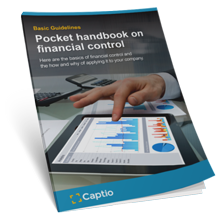Financial control is a fundamental matter for the company because, even though it may have good strategy and optimal planning, without financial control would be impossible to verify whether the current situation of the company at any given moment adheres to its original objectives.
With financial control it is possible to evaluate general performance when faced with a strategic plan. For this reason, it is necessary for all employees of the organisation to understand financial control not as a negative and regulatory element, associated with concepts such as imposition, limitations or surveillance, but rather as a mechanism to guarantee that the current activities of an organisation are in line with planned operations.
Types of financial control
A valid and commonly accepted classification at an academic and professional level establishes three major typologies of financial control:
-
Immediate or directional financial control.
-
Selective financial control
-
Postdate financial control.
Immediate or directional financial control
Consists of using a 'classic' vision of financial control. It entails knowing with the highest degree of certainty or detail the current situation of the company at any given moment. As a rule, it includes controls of a global nature based on general financial situations.
The aim of this type of control is, to apply immediate and concrete corrective measures, in the event of any kind of error or deviation that could jeapardise the objectives of the organization.

>> Do you want to be able to design an effective financial control system for your company? Discover how do it in this free pocket handbook <<
Selective financial control
This is a more specific type of control than the former, as it is focused on certain areas of the business, with the aim of establishing whether these areas comply with the processes and seeking alternatives on the way.
Postdate financial control
The principal characteristic of postdate financial control is that it is carried out once operations have already taken place. That is to say, the comparison is carried out between planned objectives based on the results already obtained and the company acts accordingly: by continuing to work in the same way if the results are satisfactory or take corrective actions this is not the case.
For this to be more effective, the ideal is for financial control to be exercised on all areas, levels and departments of the organisation and, in certain cases, simulating different situations and environments. In this way, not only errors that are already happening are identified, but also it serves as preparation for adverse circumstances that may occur in the future.





